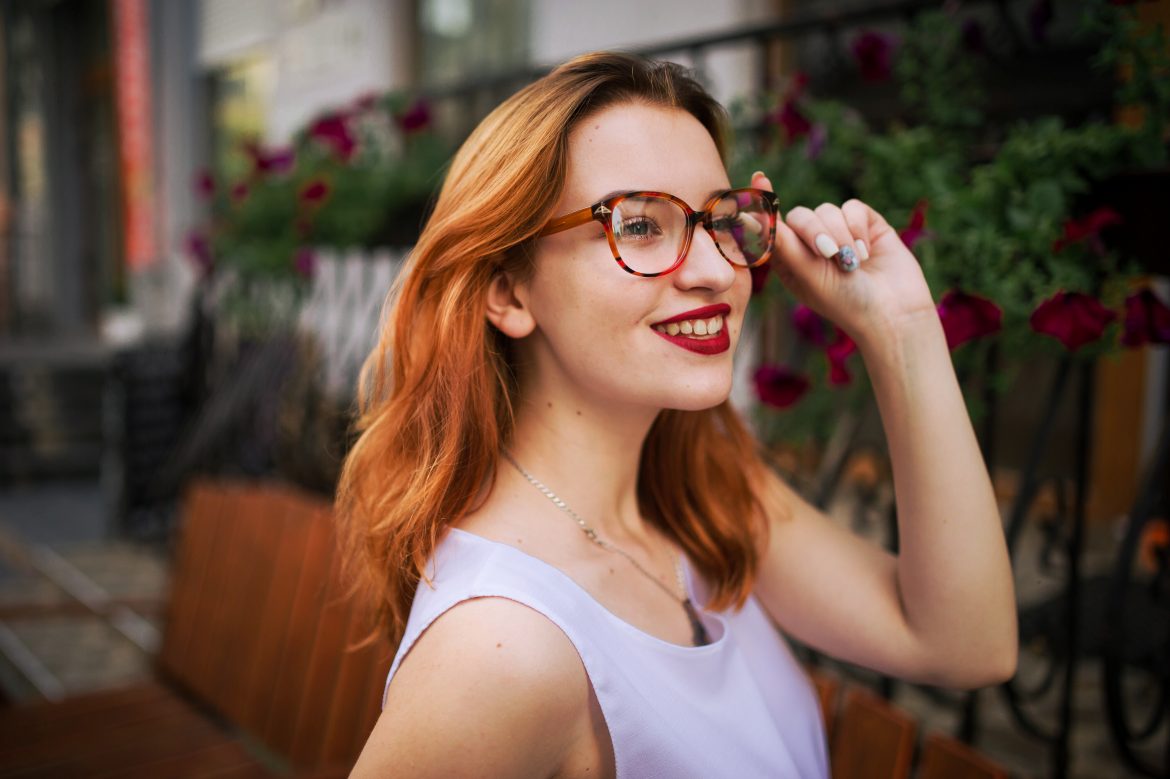As screens have become a normal part of daily life, concerns about the effects of blue light exposure are more common.
Blue-light blocking glasses, or anti blue-light glasses, have become a popular solution, promising to alleviate everything from eye strain to sleep disruptions. But what exactly are blue-light glasses, what are they claimed to do, and do they live up to the praise?
ALSO READ: How to select sunglasses that fit your face shape
What are blue light blocking glasses?
Blue-light blocking glasses are spectacles designed with lenses that filter or block a portion of blue light emitted by digital screens, LED lights, and other artificial sources.
Blue light is a high-energy, short-wavelength light within the visible spectrum, typically ranging from 400 to 500 nanometres.
These glasses often feature a yellowish tint in the lenses, which is the result of the coating or material used to reduce blue light transmission.
Available as prescription or non-prescription lenses, blue light blocking glasses are marketed to anyone spending significant time in front of screens, whether for work, gaming, or leisure.
Some models also claim to block ultraviolet (UV) light, though this is less common.

Pexels
What are blue light glasses claimed to do?
Manufacturers and retailers promote blue light glasses for a variety of potential benefits, including:
Reducing digital eye strain: Prolonged screen time can lead to symptoms like dry eyes, blurred vision, and discomfort, collectively known as computer vision syndrome. Blue light glasses are said to ease these symptoms by limiting blue light exposure.
Improving sleep quality: Blue light can suppress melatonin production, the hormone responsible for regulating sleep. Wearing blue light glasses, especially in the evening, is claimed to help maintain healthy sleep cycles.
Protecting long-term eye health: Some brands suggest that blue light exposure may contribute to retinal damage over time, and their glasses could offer a protective barrier.
Enhancing visual comfort: By reducing glare and filtering harsh light, these glasses are said to make screen time more comfortable, particularly in low-light conditions.
With such bold claims, it’s natural to wonder whether the science backs them up. Let’s explore the evidence.
Are there real benefits to blue light glasses?
The effectiveness of blue light glasses has been a topic of debate among researchers and eye care professionals. Here’s what the current evidence suggests:
Digital eye strain
Some studies indicate that blue light glasses may help alleviate symptoms of digital eye strain. One study found that participants wearing blue light-filtering lenses reported less eye fatigue and discomfort after prolonged computer use compared to those using standard lenses. However, the evidence is not conclusive, as other research has found no significant improvement in eye strain symptoms with blue light glasses compared to placebo lenses.
Sleep quality
The impact of blue light on sleep is better understood. Research has confirmed that blue light exposure in the evening can delay melatonin production and disrupt sleep patterns. Blue light glasses may help mitigate this effect by filtering out a portion of blue light. However, similar benefits can be achieved through other means, such as using night mode settings on devices or avoiding screens altogether before bed.
Eye health
Claims about blue light glasses protecting against long-term retinal damage are more controversial. While some laboratory studies suggest that excessive blue light exposure could harm retinal cells, there’s no definitive evidence that the levels emitted by screens pose a significant risk to human eyes. As such, the protective claims of blue light blocking glasses remain speculative and require further research.

Unsplash
What else should you know about blue light glasses?
Before investing in a pair of blue light glasses, consider the following:
Not all specs are created equal
The quality and effectiveness of blue light blocking glasses vary widely. Some lenses block only a small percentage of blue light, while others filter out a significant portion.
Look for glasses that specify the percentage of blue light blocked (ideally 20-40% for general use) and ensure they meet industry standards. Reputable brands often provide this information, while cheaper alternatives may lack transparency.
They’re not a substitute for healthy habits
Blue light glasses should complement, not replace, good screen hygiene. The 20-20-20 rule—looking 20 feet away for 20 seconds every 20 minutes—can significantly reduce eye strain. Adjusting screen brightness, using anti-glare filters, and maintaining proper posture also play a crucial role in visual comfort
Some drawbacks
Some users report that the yellowish tint of blue light glasses affects colour perception, which may be an issue for tasks requiring accurate colour representation, such as graphic design. Additionally, wearing them unnecessarily (e.g., during the day with minimal screen time) may not provide any noticeable benefits.
Consult an eye care professional
If you experience persistent eye discomfort or sleep issues, consult an optometrist or ophthalmologist. These symptoms could stem from other causes, such as uncorrected vision problems or underlying health conditions, which blue light glasses won’t address.

Unsplash
How to choose the right blue light glasses
If you decide to try blue light glasses, keep these tips in mind:
Check the blue light filtering range: Opt for glasses that block blue light in the 400-450 nm range, as this is where melatonin suppression is most significant.
Consider your lifestyle: If you use screens primarily at night, prioritise glasses with stronger blue light filtering. For daytime use, lighter filtering may suffice.
Read reviews and research brands: Look for customer feedback and third-party testing to verify claims about blue light blocking efficacy.
ALSO SEE:
Feature Image: Freepik

